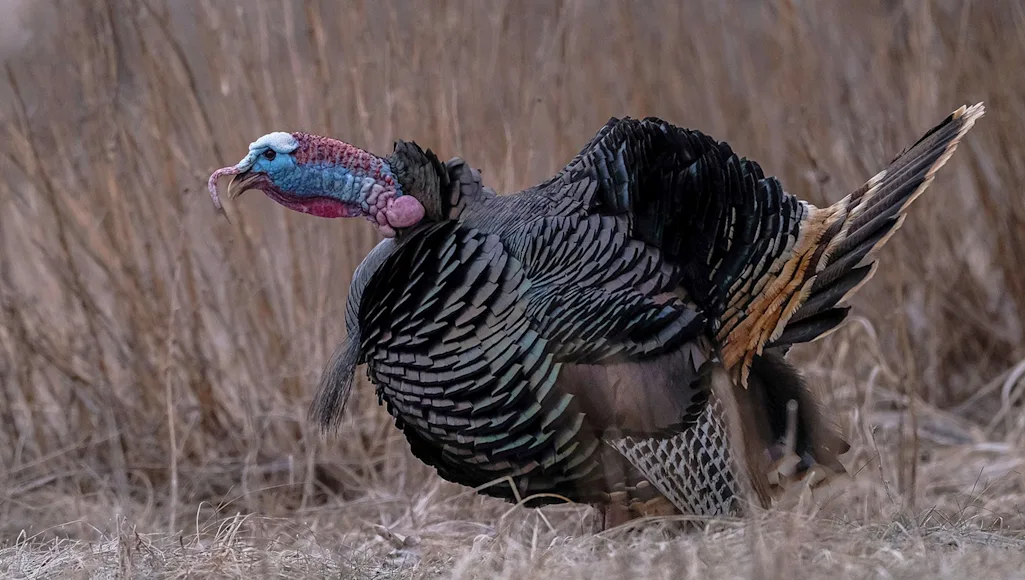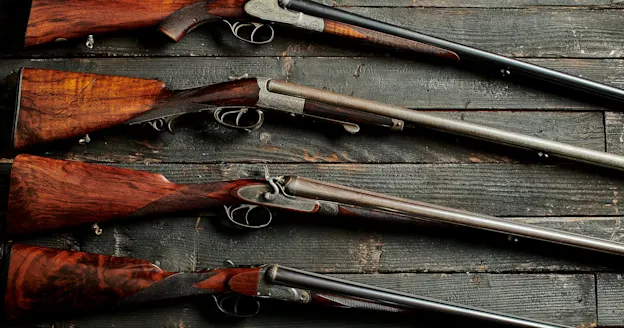A turkey hunter's life, to paraphrase what they say about a soldier’s, is 99 percent boredom, 1 percent sheer excitement (instead of terror). You make plans, scout, walk for miles, and wait for hours, days even, in hopes of a momentary thrill. But those few minutes can change your whole season, even your entire spring.
Like many Americans, I am blessed, and slightly cursed, to live a comfortable, unexciting life. According to the fitness tracker my kids gave me for my birthday, not much gets my heart going these days. And so far this season, turkey hunting hasn’t helped. My outings have been heavy on boredom and extra light on excitement: no close calls, not much gobbling, and not many turkeys.
This morning, I’m trying a new place. It’s a farm where I hunt pheasants, with brushy draws and creeks amid the corn, and one long draw full of mature hardwoods. I’ve never seen turkeys nor sign here in the fall, but when I checked it on a whim about a week and a half before the spring season, I found a tom all by himself, gobbling hard. A lot can happen to a lonely tom in 10 days. He can find hens. He can find a load of No. 6s. Or he can find a new place to strut. There is a chance, however, that he could stay put, and this year, taking a shot on a 10-day-old scouting report seems like as good a plan as any.
Going Old School for Turkeys
It’s well before first light as I park along the cornfield. When I first started turkey hunting, the birds were new to many parts of the country. All the advice you could find was written by old-school Southern hunters who wrote only about killing turkeys off the roost. I drank it up. Some of it sticks with me, like “It should be so dark when you walk in that you can’t see your feet.” When I look down, I can make out my boots, but barely. We’ll call that good enough.
There’s a wide-based tree to sit against overlooking the knob in the stubble where I’d seen the bird strutting, and I sneak out as far into the open as I dare to set a single hen decoy, then settle against the trunk. When the turkey gobbles, he’s not across from me where I’d roosted him last time but directly behind me. I must have walked within 50 yards of him on the way in. Yet he’s none the wiser. Score one for the old-school turkey hunters.
The bird is close, inside 100 yards, and my first instinct is to screw up the hunt by trying to turn around so I can see across the draw in case he comes straight to me through the brushy woods. Instead, I sit tight and tell myself to be confident in my spot.
The bird sounds off regularly until I croak out a few quiet clucks that are met with silence. When this happens, I always think I’ve scared the bird at first. More likely, he’s in the tree thinking, Hmm. She’s new and she’s right over there. I should go check her out. It’s probably a good sign when they stop, but I’m still relieved when this one starts gobbling again.
When I decide it’s light enough for a turkey to fly down, I beat my hat against my leg and soon hear real wingbeats. The bird gobbles when he hits the ground. He’s coming, but I give him a few soft yelps as reinforcement, and then I tell myself to shut up.
How to Get Pumped Up in the Turkey Woods

The gobbles let me track the tom’s progress across the draw to the edge of the field near a grassy waterway. When he pops out on my side, he’s nearly in range. My breathing has turned shallow, but I’m calm, because I know for sure now that this bird is coming, and I am going to shoot him. Or, at least, I’m going to shoot at him. The unfortunate irony of turkey hunting is that we wait for this moment, work for it, plan for it, daydream about it, yet when it’s finally upon us, the excitement we seek can get the better of us.
As the gobbler closes, I tell myself to keep my head on the gun, my eye on the target, and my mind in the present. Kill it through the gun is the phrase I’ve brought with me from target shooting to the turkey woods, and I repeat it now. The turkey struts to 25 yards. In the half-light, it’s hard to make out much more than a black blob and a white head through the red-dot sight, but that’s enough.
The bird goes flat, and I’m up and running. I shoot pump guns for turkeys because once I pull the trigger, the gun is safe until I cycle the action, so I can jump up from the tree and run to see the tom I’ve been imagining all spring.
Read Next: Essential Tactics for Spring Gobblers
The colors of a gobbler’s head, like the colors on a fresh-caught trout, begin to fade in a matter of minutes. I’d like to get pictures now, but it’s not even sunrise yet. In a minute, I’ll carry the bird to the top of the hill so I can be ready when the sun does rise up over the crest. Right now, though, I’m going to sit here in the stubble with my turkey.
I notice that my heart is pounding. Curious, I open the fitness tracker app. Five minutes ago, my pulse, which hovers around 60 on a regular, boring day at home, hit 152 beats a minute right before I shot the bird. My heart rate is already coming down. The feeling I was hunting for, though, will stay with me all spring.






